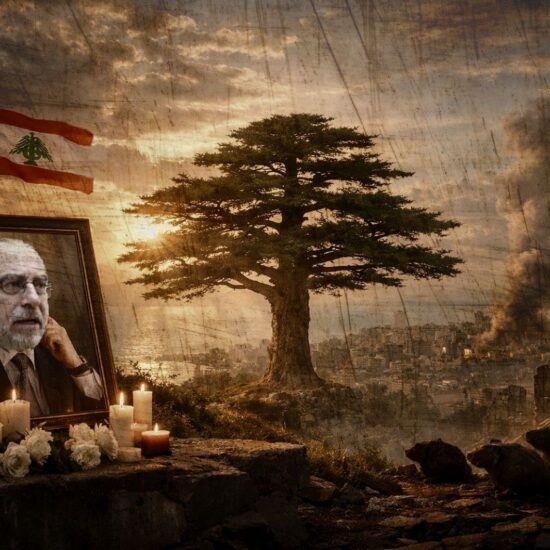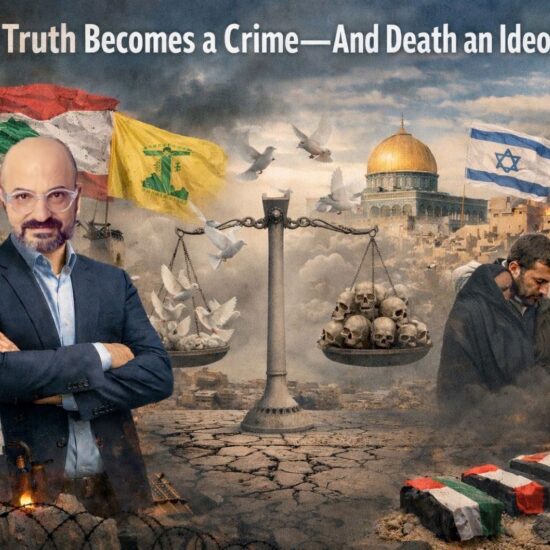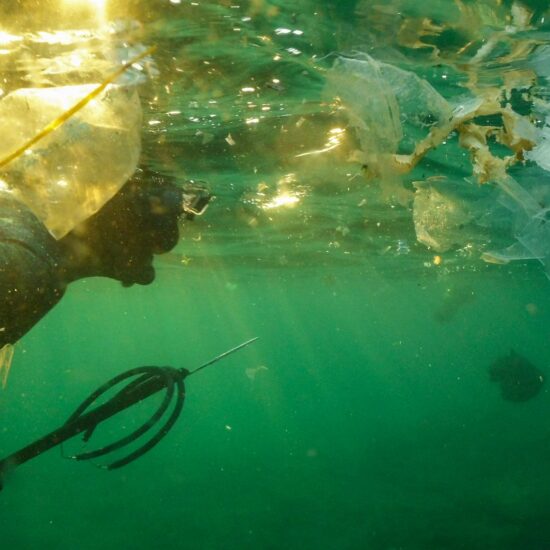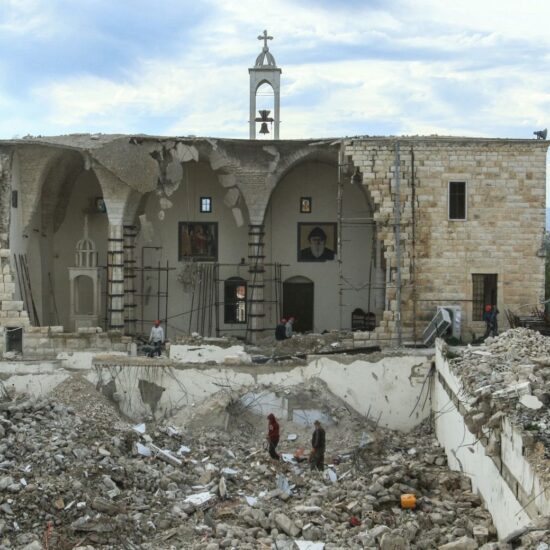
Deadly day in southern Lebanon: 22 killed and 124 injured by Israeli fire, Israeli withdrawal from southern Lebanon to continue beyond 60 days, The quest for Lebanon’s post-war reconstruction, Israeli army blocks all roads in the eastern sector, Saudi Foreign Minister visits Lebanon for first time in 15 years, Berri states allocation of Finance Ministry to the Shiite community is a right granted by Taif, With ceasefires on two fronts, Israel takes aim at occupied West Bank, Israel and Hamas complete second swap of prisoners, Israeli military operation continues in occupied Jenin, Trump’s inauguration marks lifting sanctions against illegal settlers in the West Bank, Israel raids homes of freed Palestinians and shoots at Gaza residents, Electronic Intifada director arrested in Switzerland ahead of speaking event, French warrant issued for Assad over 2017 crimes in Daraa, EU considers gradual suspension of economic sanctions on Syria, UN Envoy meets Al-Sharaa focusing on Resolution 2254, Baath party branch in Suwayda transformed into university building, Turkey reopens Aleppo consulate after 13 years, Israeli Army strengthens occupation in Quneitra and seizes local property, Military Operations Command’s Forces deployed to Al-Rasafa, SDF denies clashes, MOC Personnel commits violations in western Homs, 13 civilian deaths documented, Drone attack on Saudi Hospital in Sudan’s Darfur kills 70, injures dozens, Yemen’s Houthi release 153 prisoners of war
Ceasefire, day 61. The Israelis like it or not, the people of the south returned home. It is not surprising that it is, once again, the side – not belligerent, but civilian – which the world calls terrorists that abides by the rules of engagement – and ‘the only democracy in the Middle East’, systematically, that violates them. A few days before that on Sunday, January 26, Lebanon’s southern villagers enforced the terms of the truce on the border of its validity, in the second exchange of prisoners between Israel and Hamas, the physical condition of the four IDF female soldiers, released wearing their uniforms after fifteen months of intense bombardment on Gaza, had already confirmed it: how a militia born and raised under occupation can respect the law of war, and one of the world’s best-equipped regular armies does not care to.
What took place yesterday, however, on the shifting border of a Merkava tank and the step of a woman in abaya, is a story that had never been written. The credit for liberation, the singing for martyrdom of 22 victims – civilian and civilized, to borrow the terms of the Zionist narrative -, the pride in the scars of 124 wounded, will belong to the people. They will compose songs, and they will have as protagonist a village, Aitaroun, Houla, Markaba, Kfar Kila, Odaisseh, Blida, Dhaira, Mais al-Jabal, Bani Hayyan, Maroun al-Ras, Bint Jbeil, Ainata, Wadi al-Salouqi, Beit Yahoon, Shakra, Deir Mimas, Robb Thalatine, Taybeh, Yaroun – as protagonists, their children, to whom the land belongs. Yet it was necessary to ignore the order of postponement, to enforce, with the authority of a path, the right of return.
Since the morning, residents of south Lebanon have been marching towards their homes, demanding Israel end its occupation of the south after it failed to withdraw by the agreed deadline. Only a few days before, on Thursday, Israel’s ambassador to the United States, Michael Herzog, said, in an interview with his country’s army radio, that the deadline for Israel’s withdrawal from Lebanese territory was not “set in stone,” mentioning “ongoing negotiations” with the new US administration under Donald Trump to extend the occupation of Lebanon’s border areas. In addition to repeatedly violating the ceasefire agreement with Hezbollah, signed on November 26, Israel would remain in the areas it still occupies in Lebanon for an indefinite period beyond the approached January 26 deadline set by the agreement.
In theory, this extended presence in the border area is intended to weaken what remains of the Iranian-backed party’s foothold in these villages, and to ensure that it complies with the terms of the agreement. However, in practice, a prolonged Israeli occupation would primarily deal a blow to the Lebanese state and, more importantly, its ability to act as a counterbalance to Hezbollah.
In fact, contrary to the terms of the truce, it was not the Israelis’ withdrawal to allow the Lebanese Army to take over, nor the same Lebanese counteroffensive: but the determination of displaced residents that forced their soldiers to make the return a reality. Even though, during his inaugural speech, newly-elected President Joseph Aoun emphasized the importance of enabling the State to “eradicate the Israeli occupation and repel its aggressions across all Lebanese territory,” respecting international legitimacy and ensuring that the monopoly on weapons remains with the country, facts proved the opposite: that while the State is still an idea – home is not; while the government is powerless – a family is not; while tribunals and courts are unfair – return is not. And while an army or a militia might be open to criticism, an unarmed civilian march, made of elderly, children and women, cannot be.
In Lebanon
They will not withdraw: On Friday, Israeli Prime Minister Benjamin Netanyahu said that the gradual withdrawal of troops from southern Lebanon would continue beyond the 60 days stipulated in the ceasefire agreement with Hezbollah, claiming that Beirut had not “fully” honored its commitments. Lebanese authorities have not immediately responded to Israel’s announcement.
The agreement, which took effect on November 27 and ended more than two months of warfare, states that the Lebanese army must be deployed alongside UN peacekeepers in southern Lebanon, from where the Israeli army must withdraw over 60 days, the final day being yesterday, Sunday, January 26.
However, the Israeli army evacuated the entire coastal region of southern Lebanon but still occupied areas further east. “The cease-fire agreement has not been fully implemented by Lebanon, so the phased withdrawal process will continue in coordination with the United States,” Netanyahu’s office said in a statement.
The agreement’s implementation was supposed to be overseen by the United States and France, but the latter is not mentioned in the statement, emphasizing that one of the conditions of the agreement stipulated that “the Lebanese army deploys in southern Lebanon” and requires “the withdrawal of Hezbollah beyond the Litani River.” As Israel believes this is not the case, it “will not endanger its locals and citizens and will achieve the goals of the war in the north, allowing residents to return to their homes in safety.”
Why: In addition to the mining, dismantling, and confiscation operations of Hezbollah’s weapons and missiles, the Israeli presence has several objectives. For instance, in recent days, cases of recruitment of agents by Israel in southern Lebanon have begun to be revealed. Any military presence on the ground is supposed to provide safe movement for these agents, some of whom have been arrested by Lebanese security services. Israel also wants to prolong its presence as long as possible to activate its intelligence services operations, particularly the Shabak, the Mossad and Unit 8200.
The issue of extending the deadline for Israeli withdrawal had already been known for some time. The Israelis had informed UNIFIL and the committee tasked with monitoring the ceasefire agreement’s implementation mechanisms. This point was also discussed by the committee, represented by American officer Jasper Jeffers, with Lebanese officials. According to Lebanese sources, the American general reportedly said that the Israeli army would withdraw from the western and central sectors while maintaining certain positions in the central sector and a limited presence in the eastern sector. He added that the withdrawal from these positions should occur gradually.
Dictating the terms: Since the temporary truce began, on November 27, almost daily, the Israeli army conducted various maneuvers in the exclusion zone about 10 kilometers wide. Operations that its Arabic-language spokesperson Avichay Adraee regularly described on his X account as: demolishing infrastructure, houses, places of worship, or playgrounds; temporary abductions of Lebanese (often farmers and shepherds from the Hasbaya district); incessant drone flyovers; sabotage of water infrastructure (notably the ‘Canal 800 Project,’ aimed at supplying southern Lebanon with drinking water and irrigation water) or solar; destruction of roads; and assassinations of nearly forty people, according to our count.
During the first month of the ceasefire, the Israeli army reached more than 31 new areas and reportedly carried out at least 88 explosions, according to data from the National Council for Scientific Research (CNRS) in Lebanon published by The Washington Post. Additionally, according to the analysis of satellite images by the American daily, the Israeli army damaged or destroyed more than 800 buildings between December 5 and January 6, or 26 buildings per day. It continued its demolition campaigns throughout January, mainly in the Marjayoun district, facing the main villages of northern Israel, Kiryat Shmona, and Metulla.
On the other side, Hezbollah conducted only one military operation in two months: on January 2, when the party mortared the site of Ruweissat al-Alam in the hills of Kfar Shouba – an uninhabited and contested area between Lebanon, Syria, and Israel – claiming an “initial defensive response as a warning against repeated violations.” During these two months, four Israeli soldiers died in “two operational accidents” on December 11 and 13, due to explosives left by another contingent.
With or without Hezbollah: The Israeli army notably took advantage of the ceasefire to carry out unprecedented movements. It entered for the first time into certain neighborhoods of Aitaroun on November 30; in the town of Bint Jbeil repeatedly from Maroun al-Ras; and operated from December 20 constant comings and goings between Markaba and Qantara – located in the strategic valley of Wadi Slouqi, about 7 km from the Blue Line -, passing through Bani Hayyan and Tallousseh, from which it removed welcome signs only on January 20.
Above all, it was able to enter without being troubled into the heart of the towns of Naqoura and Khiam, the subject of violent clashes during the war. On December 18, Naqoura municipal council president Abbas Awada accused the Israeli army of having destroyed more than 35% percent of the village “since the ceasefire went into force.” On January 7, after the Israeli army’s withdrawal from his village, he claimed to have found Naqoura “almost completely destroyed,” in remarks reported by the state-run National Information Agency (NNA).
On Saturday, a day before the end of the ceasefire, the Israeli army sealed off roads by constructing sand barriers or destroying pavement with excavators. It issued a statement prohibiting residents of around 60 villages from returning to their homes. Meanwhile, Israeli aircraft patrolled the eastern sector, including the Marjayoun and Hasbaya districts, while drones flew over the Nabatieh region. Residents also received phone calls in Arabic from international numbers, warning them not to return home. The Israeli army, however, clarified that it had “no intention of firing on the residents,” although the deadly events of Sunday, January 26, proved the opposite.
At the same time, the international monitoring committee, responsible for supervising the implementation and monitoring of the ceasefire, met officially three times in Naqoura during those 60 days. Composed of representatives from the United States, France, the Lebanese army, the Israeli army and the United Nations Interim Force in Lebanon (UNIFIL), this committee directed by American Major General Jasper Jeffers never officially spoke out on the hundreds of violations of the agreement committed by the Israeli army, according to a count by the Lebanese Ministry of Foreign Affairs, which filed a complaint with the UN Security Council on December 24.
The quest for reconstruction: One of the government’s priorities will be to work on the “reconstruction of villages and houses destroyed in southern Lebanon, the Beqaa and Beirut to allow residents to return to their homes,” stated designated Prime Minister Nawaf Salam after meeting with Parliament Speaker Nabih Berri on January 14. This is a colossal task as the country has been mired for more than five years in a severe economic and financial crisis that has significantly restricted the state’s maneuvering room – while under the tight control of the central bank to maintain monetary stabilization – and Israel has yet to fully withdraw its troops by January 27.
For now, the only semblance of a strategy is a “bill aimed at rebuilding buildings damaged by the Israeli aggression against Lebanon,” approved by the caretaker government of Najib Miqati 10 days after the cease-fire came into effect. This text, which still needs parliamentary approval, largely relies on the law passed in 2014 regarding the post-war reconstruction of 2006, despite its numerous faults and the difference in the extent of damage between the two conflicts.
Although there is still no final assessment, as some villages in southern Lebanon are yet to be accessible, it is certain that today’s destruction is much more significant than in 2006: there are 13 villages that have been completely razed or faced the destruction of entire neighborhoods.
The material damage is estimated to be around 3.4 billion dollars, according to a preliminary assessment by the World Bank. Published nearly two weeks before the ceasefire, this could still be revised upwards. According to the report by the National Council for Scientific Research published on December 23, 2024, the southern suburbs of Beirut alone have seen the destruction of 353 buildings, along with 593 severely damaged buildings – of which 120 are expected to be fully destroyed – and 5,417 others suffering significant, moderate, or minor damage — compared to 265 and 951 buildings in 2006, respectively.
Faisal bin Farhan in Beirut: Saudi Foreign Minister Prince Faisal bin Farhan arrived in Beirut on Thursday, marking the first visit of this kind to Lebanon in 15 years. Farhan visited the presidential palace in Baabda and declared that Saudi Arabia “stands by Lebanon,” expressing confidence in the country’s new leaders and their ability to implement their governance’s goals. Speaking to the press, Farhan specifically named President Joseph Aoun and Prime Minister-designate Nawaf Salam – both newly elected and appointed to their positions earlier this month – saying Saudi Arabia is confident they will enact “the necessary reforms to strengthen Lebanon’s security, stability, and unity.”
These reforms are a prerequisite for unlocking aid from the Gulf State that Lebanon relies on to rebuild the country, devastated by a profound economic crisis and a two-month-long massive bombing campaign by Israel during its war with Hezbollah.
During his own address, Aoun described Farhan’s visit as “a message of hope.” Saudi Arabia is a member of the Quintet, five countries including the US, Qatar, Egypt, and France that were active during the two year presidential vacuum in trying to create a consensus among Lebanese lawmakers to facilitate a successful election. Aoun is seen to have been the favored candidate of both the US and Saudi Arabia.
Upon taking the oath on January 9, Aoun promised to open “a new era,” where the state would have “the monopoly of weapons,” in a country where Hezbollah is the only group to have retained its weapons after the end of the Civil War. He had also promised to adopt a “policy of positive neutrality” and to forge “the best relations with brotherly Arab countries.”
Finance to the Shiites: Parliament Speaker Nabih Berri said on Wednesday, in an interview with the Lebanese media Asas Media, that the Hezbollah and Amal tandem are determined to keep the finance ministry in the next government. The head of the Amal movement defended what he considers “a right granted to the Shiite community since the adoption of the Constitution resulting from the Taif Agreement,” stating that this issue “has not simply been discussed, but has been settled.”
This statement comes as the announcement of the future ministerial team of the designated Prime Minister, Nawaf Salam, who is trying to break the monopoly of communities in the distribution of portfolios traditionally attributed to certain ministries (Finance, Foreign Affairs, Defense, Interior), approaches. Salam said on Tuesday that no ministry “could be an exclusive right for a confession.”
Following his lead, the new president of the Republic Joseph Aoun also raised the tone on Wednesday following an interview with a delegation from the Constitutional Council, refusing that the genesis of the Cabinet “gets lost in sectarian, confessional and political meanderings.”
In Palestine
Jenin, Jenin: Over the past week, the Jenin area in the occupied West Bank has experienced significant military activity and escalating tensions. In particular, on January 20, 2025, the Israeli military launched a large-scale operation named ‘Iron Wall’ in the Jenin refugee camp, stating the objective being to “eradicate terrorism” by targeting Palestinian militant groups allegedly supported by Iran.
The operation resulted in at least 12 Palestinian deaths, and approximately 40 injuries. Hundreds of residents evacuated their homes due to the intensity of the raids and destruction of infrastructure. Israeli forces employed drones, helicopters, and light armored vehicles during the operation. They demolished houses and imposed tight restrictions on movement, leading to significant displacement and humanitarian concerns.
The Palestinian Authority condemned the operation, accusing Israeli forces of using excessive and indiscriminate force. There were also reports of Palestinian Authority forces initially engaging with camp residents, which has led to internal criticism. The United Nations and various human rights organizations expressed alarm over the escalation, highlighting the potential for unlawful and disproportionate use of force. France and Jordan issued warnings regarding the intensifying situation.
At the same time, on the fourth day of the large-scale Israeli operation in Jenin launched after the truce in Gaza, an Israeli drone strike on a vehicle near the West Bank town of Qabatiya killed two people, the Palestinian Health Ministry said on Friday. The Israeli military said an air strike had hit a vehicle with what it said was a ‘terrorist cell’ inside but gave no further details.
Trump and the settlers: In a related development, US President Donald Trump lifted sanctions previously imposed on Israeli settlers by the Biden administration. This move was seen as support for settlers who have attacked Palestinian villages in the West Bank and was met with approval from Israel’s hard right.
These former sanctions targeted Israeli settlements in the West Bank, which are considered illegal under international law by most countries and the United Nations. They included restrictions on US companies operating in settlements and limitations on aid or financial support for settler-related activities.
Trump’s administration framed the decision as a reaffirmation of US support for Israel, particularly under its right-wing government led by Prime Minister Benjamin Netanyahu, in clear alignment with Trump’s earlier policies, including recognizing Jerusalem as Israel’s capital and supporting settlement expansion during his first term. The United Nations and European Union criticized the decision, reiterating their position that settlements violate international law and are an obstacle to peace.
At the same time, Axios, citing three Israeli officials, reported that the White House has instructed the US military to release a hold imposed by Joe Biden’s administration on the supply of 2,000-pound (900 kg) bombs to Israel. Biden has put a hold on the delivery of the 2,000-pound bombs due to concerns about their use by the Israeli military in the Gaza Strip.
Ceasefire development: The operation in Jenin and Trump’s inauguration coincided with a ceasefire in Gaza, allowing Israeli forces to redirect their focus to the West Bank.
On January 25, following a prior prisoners’ exchange six days earlier, four female Israeli soldiers – Karina Ariev, Daniella Gilboa, Naama Levy, and Liri Albag – were released by Hamas in perfect health, and wearing their IDF military uniforms, after 477 days in captivity. At the same time, 200 Palestinian prisoners were released from Israeli jails, concluding the second prisoner exchange in the framework of the Gaza ceasefire deal between Israel and Hamas.
One of the Palestinian prisoners who was released on Sunday is Mohammed al-Tous, the longest-serving Palestinian prisoner held in an Israeli jail. He was behind bars for nearly four decades, after being arrested in 1985 after being accused of carrying out attacks against Israeli targets.
However, while Hamas proved to be fully respecting the laws of war in the treatment of hostages, Israeli forces stormed the homes of several former Palestinian prisoners who were freed as part of the deal to prevent celebrations for their return. Al-Jazeera correspondents reported that Palestinians were shot at as they waited for permission to cross into northern Gaza through the Netzarim corridor, while the gunfire killed one person. Hamas denounced Israel for delaying the implementation of the ceasefire deal by not allowing Palestinians to return to their homes in the north of Gaza. 70 of the released prisoners, in fact, were exiled in Egypt, Egypt’s state-affiliated Al-Qahera News channel reported.
Reconstructing Gaza: The cease-fire and hostage release agreement between Israel and Hamas, in effect as of January 19, also gives the green light to initial efforts to restore the devastated infrastructure of Gaza. Given the widespread destruction, which has left the majority of the besieged enclave in ruins – especially its north, where entire neighborhoods have been reduced to ruins – the first steps toward reconstruction will focus on establishing temporary housing solutions, according to reports from the Israeli outlet Haaretz.
The plan involves setting up tent encampments funded by the international community to accommodate displaced residents while long-term reconstruction efforts are launched. Israel has committed to allowing for the entry of Egyptian construction companies and the import of heavy equipment, iron, and other essential materials. Large-scale reconstruction is outlined in the ceasefire agreement as part of its third and final phase, which is expected to last “three to five years” and will prioritize roads, schools, hospitals, and water, sewage, and electricity networks, all of which have suffered catastrophic damage.
However, a UN damage assessment released earlier this week revealed that Israeli bombardment of Gaza has left it strewn with over 50 million tonnes of rubble that could take 21 years and 1.2 billion dollars to clear, a necessary precursor to rebuilding the largely flattened landscape. A previous assessment conducted by the United Nations Satellite Centre (UNOSAT) in December 2024 had found that 69 percent of all of Gaza’s buildings, about 170,812 in total, have been damaged. During the nearly 15 months of war, more than 90 percent of the population was displaced within the Strip, often multiple times. The United Nations Office for the Coordination of Humanitarian Affairs (OCHA) reported that by January 2024, at least 68 percent of Gaza’s road network had been damaged during the conflict.
In anti-democratic Europe: The director of the Electronic Intifada has been arrested by Swiss authorities ahead of a speaking event in Zurich, the Palestine-focused online news outlet said. Ali Abunimah arrived in Switzerland on Friday and was questioned by airport police for an hour before being allowed to enter the country. He was then arrested on Saturday afternoon. The news outlet wrote on its website that the arrest was “part of a growing backlash from Western governments against expressions of solidarity with the Palestinian people”.
In May, Palestinian surgeon Ghassan Abu-Sitta, who spent 43 days in Gaza helping treat those wounded in Israel’s war, was denied entry to France where he was scheduled to make a speech at the Senate.
In Syria
A new warrant: On January 20, 2025, French investigative judges issued a new arrest warrant for former Syrian President Bashar al-Assad, accusing him of complicity in war crimes, including the deliberate targeting of civilians. This warrant is part of an investigation into the death of Salah Abou Nabour, a Franco-Syrian national killed on June 7, 2017, in a Syrian army helicopter strike on his home.
This is the second arrest warrant issued by French authorities against Assad. The first, issued in November 2023, charged him with complicity in crimes against humanity and war crimes, including chemical attacks in Douma and the eastern Ghouta district in August 2013, which resulted in over 1,000 deaths. Assad’s government has consistently denied using chemical weapons against opponents, but the regime collapse ended his immunity, prompting French prosecutors to revive the prior warrant and hold Assad accountable for alleged war crimes and crimes against humanity.
Diplomatic efforts: EU foreign ministers will meet on 27 January to discuss phasing out sanctions on Syria while retaining restrictions on arms and former regime-affiliated entities. This move, which likely requires US coordination, could gradually ease sanctions and enable reconstruction in the medium term.
Also last week, UN Pedersen’s office stated the Envoy held extensive talks with Ahmed al-Sharaa and Asaad al-Shaybani, focusing on the transition process and priorities aligned with Security Council Resolution 2254 – unanimously adopted on December 18, 2015, marking a significant step in international efforts to resolve the Syrian Civil War. The resolution provided a framework for a political solution to the conflict and emphasized the need for a Syrian-led and Syrian-owned political process facilitated by the UN. The Envoy’s renewed focus on Resolution 2254 signals continued global commitment to its framework for Syria, despite progress having been limited: the political process remains in fact stalled, with no significant breakthroughs in constitutional reform or elections. Moreover, regional and international actors maintain diverging priorities, complicating coordinated efforts.
.
The future of universities: Syrian Higher Education Minister Abdel Moneim Abdel Hafez announced that the former Baath Party branch will become a Damascus University branch in the southern city of As-Suwayda, with programs yet to be specified. It is yet unclear whether this decision is part of a broader national policy or a targeted effort to win favor with As-Suwayda’s residents.
At the same time, the new Education Ministry released a list of approved universities, sparking concerns over others. The list excludes many private and unofficial institutions but includes public universities and 29 private ones, such as Ebla, Al-Shamal, Mari, Al Maaref and Al Hayat Universities, and the Islamic University in Idlib. The decision reflects government efforts to tighten control over education, but risks the reputations of unlisted institutions and the job prospects of their graduates.
Occupied: The Syrian Observatory reported that Israel set up seven new military points last week“inside and outside the ceasefire line, some in citizens’ homes,” raising concerns among local residents and international observers about potential long-term occupation.
Following the collapse of the Assad regime in December 2024, Israeli forces advanced into the Quneitra Governorate, including areas within the United Nations Disengagement Observer Force (UNDOF) buffer zone. This move marked the first significant Israeli military presence in this region in five decades.
Residents of Quneitra have expressed frustration over the lack of action from Syrian authorities and the international community in response to Israeli incursions. The military presence has led to protests, demolitions of homes, and restricted access to farmland.
Disorder: The ‘Raqqa is Being Slaughtered Silently’ journalist group reported that the Military Operations Command (MOC)’s convoys – which overthrew the country’s former Baath regime – reached al-Rasafa, south of Raqqa, as SDF mobilized in the area. However, an SDF spokesperson denied clashes to the media outlet Asharq al-Awsat. Amid Damascus-SDF negotiations, these mobilizations appear as pressure tactics but risk escalating into military clashes.
During a large-scale security operation in western Homs, moreover, clashes with former regime members led to killings, looting, humiliation, sectarian insults, and arbitrary arrests. The Peace and Reconciliation Group described the violations as “more severe and brutal” than prior campaigns. Violations by Operations Command-affiliated factions and personnel targeted Alawite and Murshidi villages, escalating in sectarian hotspots in Homs and Hama countryside, threatening civil peace.
At the same time, though, Autonomous Administration of North and East Syria (AANES) allowed displaced families in the camp of Al-Hol to return to Homs, announcing the opening of voluntary returns for Syrians in Al-Hol to their areas of origin, pledging necessary support to ensure safe return amid Syria’s new phase following the Assad regime’s fall. Thousands of displaced families, including those of ISIS fighters, remained in Al-Hol Camp after the Kurdish-led SDF, with international coalition support, defeated ISIS. Dire conditions in the camp have sparked international calls for its closure. The Autonomous Administration’s statement can be seen as part of negotiation pressures with Damascus’s new administration.
Yet, while a Turkish flag-raising ceremony at the consulate featured Turkey’s chargé d’affaires in Damascus, Burhan Köroğlu, and Aleppo’s Consul General, Hakan Cengiz, alongside other guests, for the first time in 13 years – fierce clashes continued between Turkish forces, allied factions, and the SDF near Tishrin Dam in eastern Aleppo.
In The Region
In Sudan: Dozens of patients have been killed in a drone attack on one of the last functioning hospitals in el-Fasher in Sudan’s Darfur region. The attack on Friday killed 67 people and injured dozens, local activists and a medical source told the AFP news agency on Saturday, updating an earlier toll.
Regional governor Mini Minawi posted graphic images of bloodied bodies on his X account on Saturday, saying that the attack “exterminated” more than 70 patients, including women and children. It was not immediately clear which of Sudan’s warring sides carried out the attack.
The Sudanese army has been at war with the paramilitary RSF, who have seized nearly the entire vast western region of Darfur, since April 2023. The RSF has besieged el-Fasher, the state capital of North Darfur, since May, but army-aligned armed groups have repeatedly pushed its fighters back, preventing them from claiming the city. The war, which broke out after disputes on the integration of the two forces, has killed tens of thousands of people, driven millions from their homes and plunged half of the population into hunger.
Attacks on healthcare facilities have been rampant in el-Fasher, where medical charity Doctors Without Borders said this month the Saudi Hospital was “the only public hospital with surgical capacity still standing”. Across the country, up to 80 percent of healthcare facilities have been forced out of service, according to official figures.
In the area around el-Fasher, famine has already taken hold in three displacement camps – Zamzam, Abu Shouk and Al-Salam – and is expected to expand to five more areas including the city itself by May, according to a UN-backed assessment. The attack on the hospital in el-Fasher occurred as the Sudanese army claimed to have broken an RSF siege of its headquarters in Khartoum, in place since the war broke out.
In Yemen: The Houthis in Yemen have unilaterally released 153 prisoners of war to the International Committee of the Red Cross (ICRC), the non-governmental organization and the armed group confirmed. The “conflict-related detainees” were released in the capital, Sanaa, on Saturday, and had received regular visits by the ICRC as part of detention work to ensure humane treatment of war-related prisoners, according to the organization. The identities of the prisoners were not disclosed.
“This operation has brought much-needed relief and joy to families who have been anxiously waiting for the return of their loved ones. We know that many other families are also waiting for their chance to be reunited. We hope that today’s release will lead to many more moments like this” said Christine Cipolla, the ICRC’s head of delegation in Yemen.
Abdul Qader al-Murtada, the head of the Houthis’ Committee for Prisoners’ Affairs, said in a statement carried by Houthi-affiliated media that those released were “humanitarian cases” that included the sick, wounded and the elderly. “The goal of the initiative is to build trust and establish a new phase of serious and honest dealing,” al-Murtada was cited as saying.
The ICRC welcomed the move as “another positive step towards reviving negotiations” under a framework agreed during the country’s civil war, which raged for years between the Houthis and a Saudi Arabia-led-coalition. The war left more than 150,000 people killed and created one of the world’s worst humanitarian disasters that is still continuing, with more than 18 million people across Yemen requiring assistance.
What We’re Reading
A bubble economy: In a recent announcement that could only be described as wishful thinking, BDL Vice Governor Wissam Mansouri proudly declared that the Central Bank had gained a whopping 300 million dollars in just two weeks. However, a closer look reveals that this so-called achievement is nothing more than a mirage, a fleeting illusion in the desert of Lebanon’s economic reality – Maan Barazy explained.
Endless strategy, minimal action: With President Joseph Aoun’s election and Nawaf Salam’s as Prime Minister-Designate, there is a sense of cautious optimism in Lebanon: media reports mention potential candidates for ministerial posts with impressive credentials and international experience, while others lobby for positions. What are the sources of this newfound hope in Lebanon? Khalil Gebara asked.
Beirut blast investigations resume: After a two-year hiatus in the 2020 investigation that killed more than 220 people, Lebanese Judge Tarek Bitar resumed his work last week charging 10 people including security, customs and military personnel, Rodayna Raydan reported.
Restoring faith: Despite being exhausted by years of crises and mismanagement, the Lebanese people have found a glimmer of hope in the partnership of President Joseph Aoun and Prime Minister-designate Dr. Nawaf Salam. The President’s inaugural speech reflected a deep understanding of Lebanon’s challenges and a commitment to addressing them, Ramzi Abou Ismail analyzed for NOW.
No one died complete: A few days after the beginning of the long-awaited ceasefire in Gaza, Palestinian literature and poetry seem the only point to restart from. Valeria Rando commented the article ‘The Luxury of Death’, by Mariam Mohammed Al Khateeb, written for the Gaza-based collective We Are Not Numbers.
Lebanon +
The Makdisi brothers, hosts of the podcast Makdisi Street, welcomed Professor Sherene Seikaly, historian of University of California at Santa Barbara and editor of the Journal of Palestine Studies, and Anthony Alessandrini, Professor of English at Kingsborough Community College and of Middle Eastern Studies at The Graduate Center of the City University of New York, to discuss the American Historical Association (AHA) and the Modern Language Association (MLA) engagement with the question of Palestine. In the latest episode, they discussed the historic vote by the AHA membership on January 5, 2025 to condemn Israel’s scholasticate in Gaza despite the deeply anti-Palestinian stance of the leadership of the AHA.
They pointed out how this leadership mobilized fear, anticipatory obedience to avoid taking an ethical position against the obliteration of every Palestinian university in Gaza, despite explicitly condemning the Russian invasion of Ukraine in 2022 – as well as how ethical scholars have confronted the extraordinary silence and complicity of the two major scholarly associations about the Gaza genocide.








